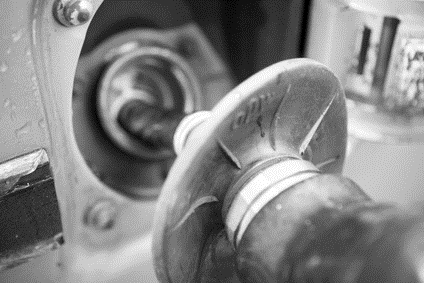
Keeping the fuel lines in working order on your car or vehicle is important. A leaking fuel line can expose gasoline or diesel to a hot engine part, which can then ignite the fuel. Fuel lines need to be kept in good repair to avoid such a potential risk to safety and your car. Unfortunately, some of the parts involved are not easy to repair -- such as an air filter. Leaks can also develop in a variety of locations, so you have to look at both the fuel lines and their fittings for problems.
Put on mechanic gloves and goggles before getting started with the mechanical work. Place a drip pan under the area where you are working to catch any fuel that escapes when you open up a line. Place your car up higher on wheel ramps so you can get accessibility underneath the car engine.
Use a screwdriver or socket wrench and appropriate socket to release fuel line fittings that you find while working on a leaking line. Open the line up on one end and drain any remaining fuel out before disconnecting the other end.
Use a flat-tip screwdriver to lever off a stubborn fuel line if it is stuck. Pull the line off its spigot. Examine the fuel line once it is removed. Look for cracks, holes, or splits in the rubber line. Look for friction spots where the line may have been pinched and worn down.
Examine the fittings for the fuel line to see if they have been damaged enough to leak fuel between the threads. Replace the old fittings with new ones and measure the distance needed for a new fuel line. Purchase a sufficient amount of new rubber fuel line and install it on the fittings. Purchase a pre-shaped tube and associated fittings if the fuel line section is a hard tube type. Use a tube bender tool to get the angle correct when installing on the engine. Tighten the fittings with a socket or crescent wrench.
Clean up any remaining areas around the engine that you worked on and lower the car off the wheel ramps. Prime the engine by pumping the throttle pedal and start the engine so that it draw new fuel through the line. Let it run for a bit. Turn it off and look underneath the engine again for any signs of remaining leakage.